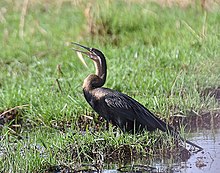http://google.com.pk/
African Porcupine Biography
Kingdom:AnimaliaPhylum:ChordataClass:MammaliaOrder:RodentiaFamily:HystricidaeGenus:HystrixGenus species:Hystrix cristata
Animal Characteristics
Head-Body Length:63-73 cmWeight:8-23 kgIdentification:The crested porcupine has black and white quills along its back and neck. The quills are erectile and can be up to 50 cm long. The porcupine's underside is covered with dark bristles.Habitat:Forests, savannasDiet:Omnivore: bark, roots, fruit, berries, insectsReproduction:A female, after a gestation period of 107-112 days, will bear 1-3 young during the wet season. The young leave the nest when they are one week old. One or maybe two litters are raised by the female each year.Social Structure:Family groups of porcupines will often share dens. Females search for food together in groups of two's or three's.Behavior:Porcupines are nocturnal animals. When threatened, a porcupine will shake its quills to produce a rattling sound that warns the intruder away.Status:No special statusInteresting Facts:Crested porcupines are born with soft quills that harden within hours after birth.
Geographic:Western Africa
Southern AfricaDate:1958 - 1988Subjects:Hystricidae
Porcupines
Rodents
Mammals
Vertebrates
Chordata
Crested porcupine
African porcupine
rodent
African porcupine
African porcupine
African porcupine
African porcupine
African porcupine
African porcupine
African porcupine
African porcupine
African porcupine
African porcupine
http://google.com.pk/
American Black Bear Biography
Kingdom:AnimaliaPhylum:ChordataClass:MammaliaOrder:CarnivoraFamily:UrsidaeGenus:UrsusGenus species:Ursus americanus
Animal Characteristics
Head-Body Length:130-190 cmWeight:male: 60-300 kg, female: 40-80 kgIdentification:American black bears are primarily black, but they may be brown, cinnamon, pale blue, or white. A white patch on the chest is also common.Habitat:Forests, tundraDiet:Omnivore: insects, nuts, berries, acorns, grass, roots, young deerReproduction:Black bears mate in June, July, or August. After a gestation period of 220 days, females give birth to 1-4 cubs in a den. The cubs are weaned when they are 6-8 months old but will not leave their mother until they are 1-1.5 years of age. Most bears live for 20-25 years.Social Structure:With the exception of a female with her cubs, black bears spend most of their time alone.Behavior:Female bears may remain in the same vicinity as their mothers. Males are forced to disperse.Status:No special status although some subspecies are rareInteresting Facts:Due to their low reproductive rates, black bears can only sustain a very low rate (0-5 percent) of additional unnatural deaths; each bear killed by man is extremely devastating.
Geographic:North AmericaDate:1958 - 1988Subjects:Black bear
Ursus
Bears
Carnivora
Mammals
Vertebrates
Chordata
Predatory animals
American black bear
American black bear
American black bear
American black bear
American black bear
American black bear
American black bear
American black bear
American black bear
American black bear
American black bear
http://google.com.pk/
American Badger Biography
Animal Characteristics
Head-Body Length:42-72 cmWeight:3.5-12 kgIdentification:The top of the American badger's body is gray to reddish in color. Its underside is yellowish. The badger's feet are dark brown or black. A white stripe runs down the center of the head from the shoulders to the nose.Habitat:Arid grasslands, burrows undergroundDiet:Carnivore: squirrels, mice, rabbits, carrionReproduction:Although these badgers mate in August or September, implantation of the fertilized egg is delayed until February. Litters of 1-5 cubs are born in April in an underground nest. They are weaned when they are eight weeks old and will remain with the female until the following fall.Social Structure:Badgers are generally solitary, living in large burrows called 'sets'Behavior:Some individuals have developed hunting strategies with coyotes that are poorly understood.Status:No special statusInteresting Facts:The American badger is the Wisconsin state animal.
American badger
American badger
American badger
American badger
American badger
American badger
American badger
American badger
American badger
American badger
http://google.com.pk/
African darter Biography
Kingdom:AnimaliaPhylum:ChordataClass:AvesOrder:PelecaniformesFamily:AnhingidaeGenus:AnhingaGenus species:Anhinga rufa
Animal Characteristics
Head-Body Length:85-97 cmWeight:1058-1815 gIdentification:The African darter has a long neck and tail and a sharp pointed bill. The crown of the male and the back of his neck is black and chestnut. The rest of his neck is chestnut with a white stripe from gape to mid-neck. His body, wings, and tail is black. The female has a brown crown and upper neck. Her lower neck is fawn and has a less distinct white stripe down her neck.Habitat:Lakes, pools, lagoons, and marshesDiet:Carnivore: fish, frogs, crabs, aquatic insectsReproduction:The breeding season for these birds is prolonged and variable. Nests are built in trees, reeds, or bushes over water in a colony. Three to five eggs are laid in each nest.Social Structure:African darters do not gather in large numbers but will nest and roost with other water birds.Behavior:African darters construct substantial nesting structures in trees above water. They will frequently soar in the air and circle high above their colony.Status:No special statusInteresting Facts:African darters are also called snake-birds because they often swim with their body fully submerged and their long, thin neck protruding out of the water.
Geographic:Sub-Saharan Africa
Middle EastDate:1974-01Subjects:Anhinga
Anhingidae
Pelecaniformes
Birds
Vertebrates
Chordata
African darter
gull-like bird
African darter
African darter
African darter
African darter
African darter
African darter
African darter
African darter
African darter
African darter
Lycaon biography
Scientific Classification
Animal Characteristics
Head-Body Length:76-112 cmHeight:75 cmWeight:18-36 kgIdentification:The African wild dog's coat has blotches of black, white, tan and brown. Its muzzle is black, and its ears are rounded. The wild dog has a tufted tail with a white tip.Habitat:Woodlands, savannas, grasslands, steppesDiet:Carnivore: mid-sized mammals including wildebeest, impala, and gazelleReproduction:African wild dogs breed in the late rainy season. As many as 16 puppies are born after a gestation period of 69-72 days and emerge from the burrow one month later. Weaning is done at 14-15 weeks of age.Social Structure:A breeding pair is the center of pack behavior. Non-breeding adults help raise the puppies.Behavior:Prey is killed by running it until it tires and then snapping and tearing at its sides. Wild dogs usually hunt at dawn or dusk.Status:Endangered: loss of habitat, persecution from humans, diseases of domestic dogInteresting Facts:Wild dogs have been spotted in the snows of Mount Kilimanjaro at over 18,000 feet.
Other Information
Lycaon
Lycaon
Lycaon
Lycaon
Lycaon
Lycaon
Lycaon
Lycaon
Lycaon
Lycaon
 African porcupine
African porcupine














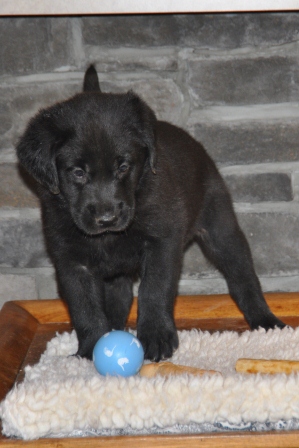




.jpg/250px-Taxidea_taxus_(Point_Reyes,_2007).jpg)
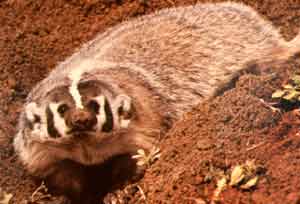



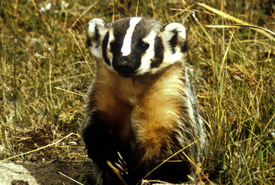
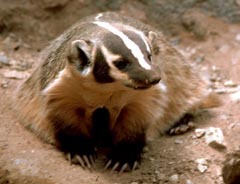

+2a.jpg)

.jpg)



,_Burgers_zoo,_Arnhem,_the_Netherlands.JPG/576px-Anhinga_rufa_(African_Darter_or_snakebird),_Burgers_zoo,_Arnhem,_the_Netherlands.JPG)

